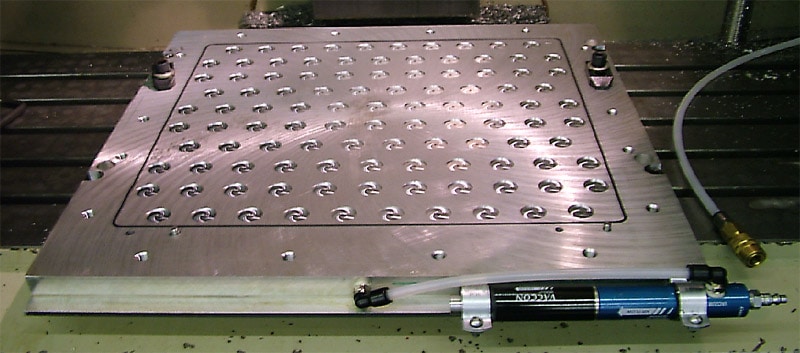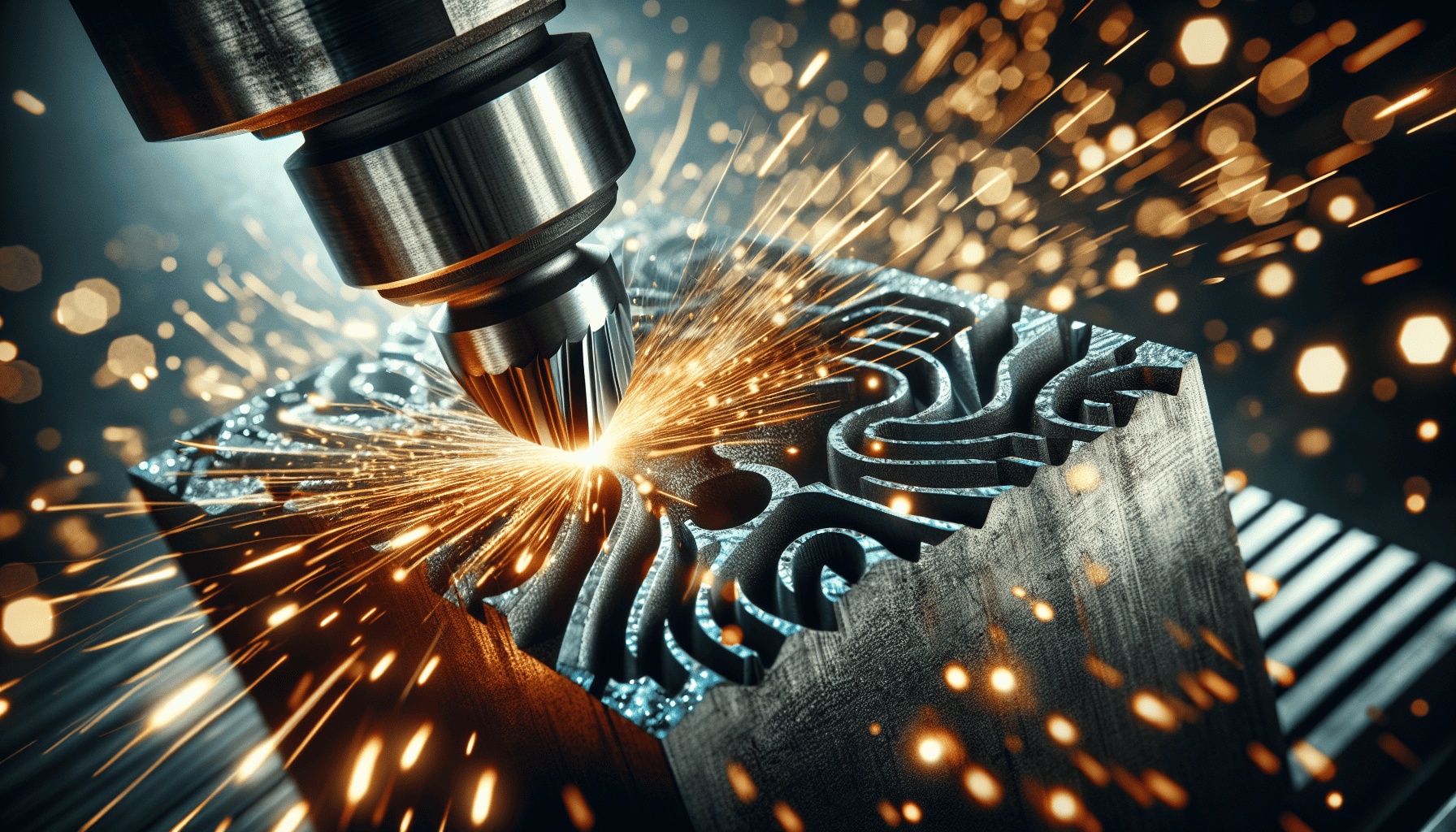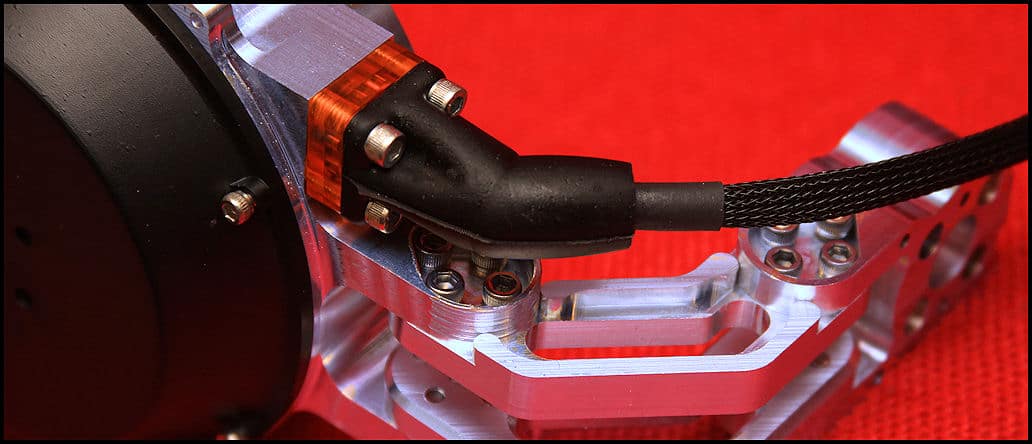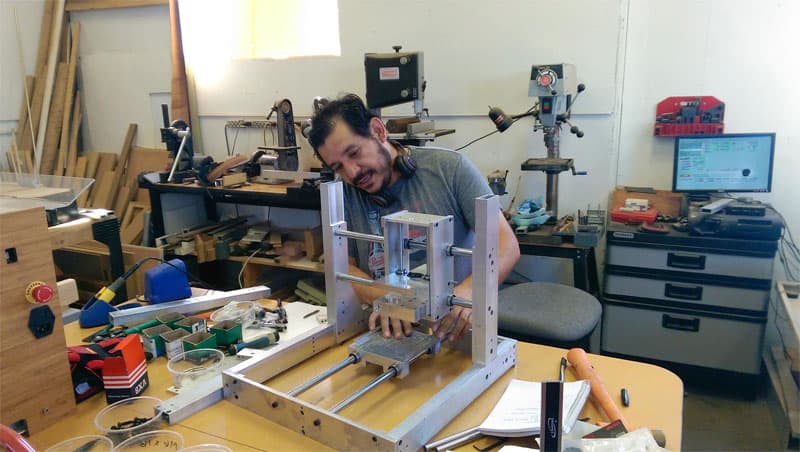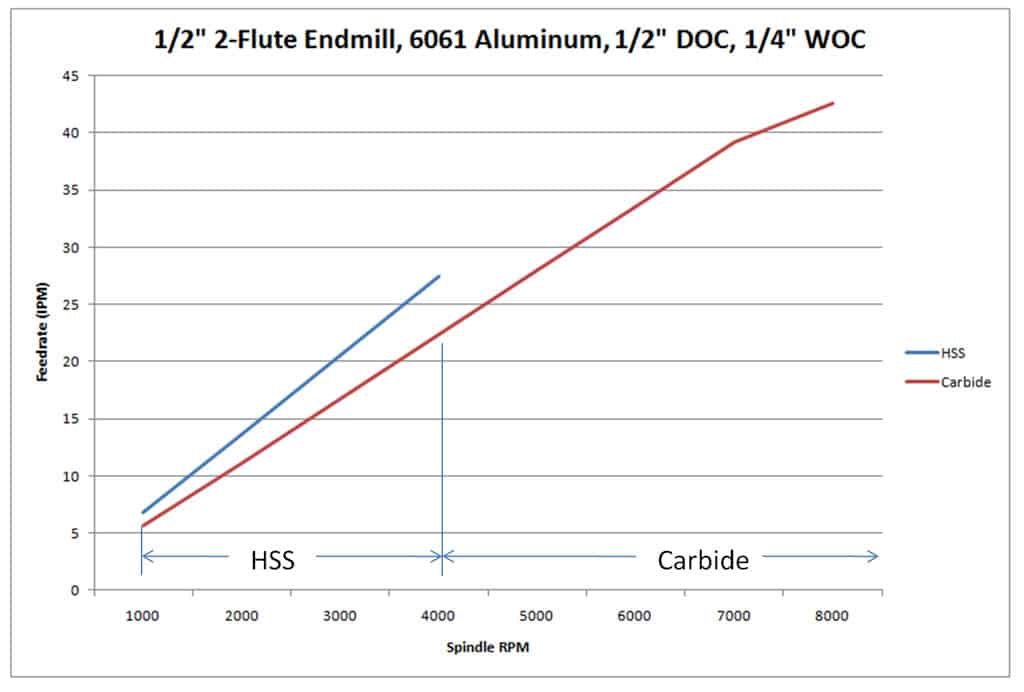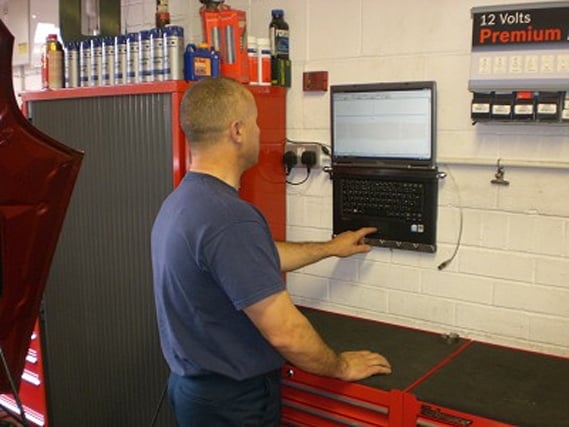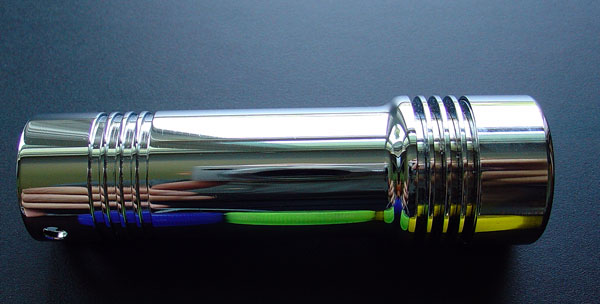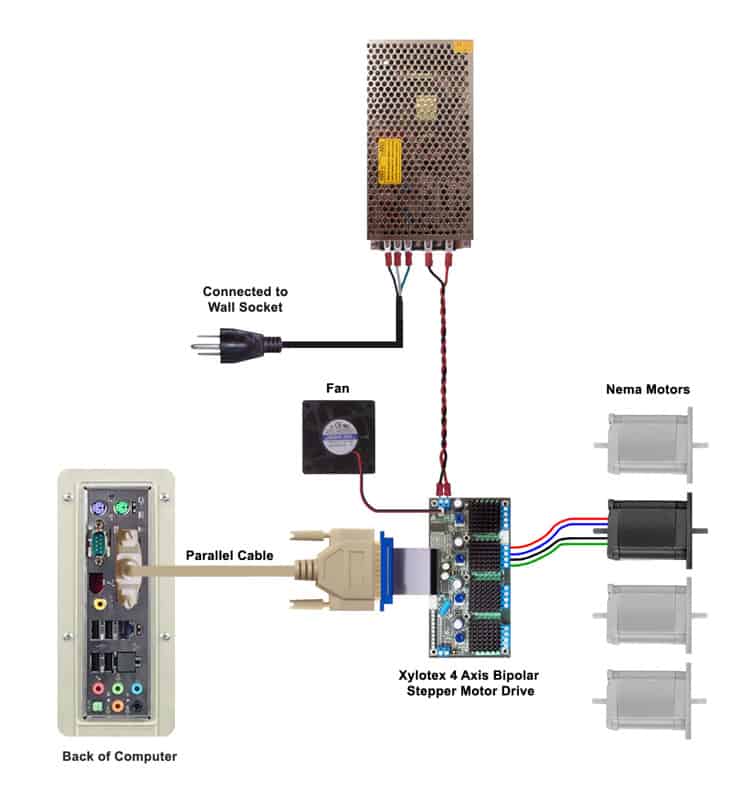This guide will precisely instruct you on selecting the appropriate metal types for your machining projects.
It is one of CNCCookbook's Material-Specific Machining Guides.
The guide is divided into major categories such as Ferrous, ALuminum, Titanium, and more. In addition, it will talk about each metal's properties, typical alloys, common things made from the metal, and some pros & cons when using the material.
The categories we use in this article are the same as used by our G-Wizard Feeds and Speeds Calculator for its Material Database. Therefore you can use G-Wizard to calculate feeds and speeds for any of these metals.
Categories for Types of Metals
Ferrous Metals
Ferrous Metals are those containing Iron, such as Steel and its many alloys, or Cast Iron. If strength is the most important characteristic you're looking for, you probably want a Ferrous Metal.
Aluminum
Aluminum is the most commonly used non-Ferrous Metal. It has a great strength to weight ratio as well as some resistance to corrosion. Plus, it's relatively easy to work with.
Brass and Other Copper Alloys
Choose brass or copper alloys for their decorative properties, electrical/heat conductivity, excellent corrosion resistance, or because they're easy to work with.
Hi-Temp Nickel Alloys
These alloys are the only ones available for the demanding conditions found in the hot sections of turbine engines used for aerospace and marine applications.
Titanium
Other Non-Ferrous Metals
Ferrous Metals
Ferrous Metals contain iron.
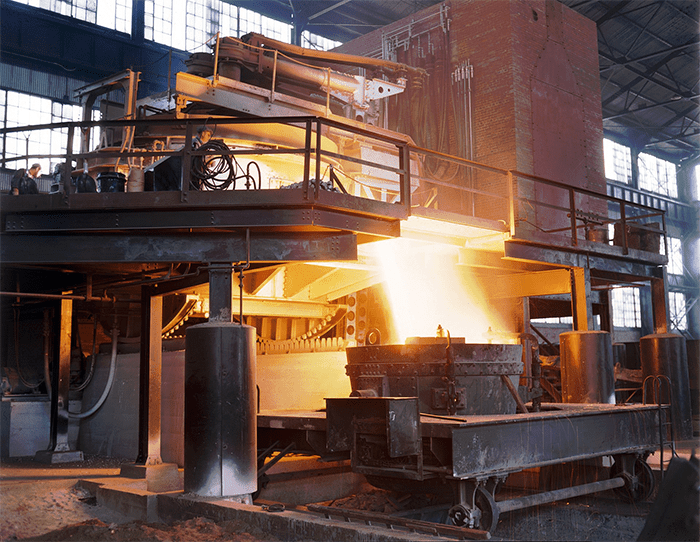
Ferrous Metals List
Metal
Alloys
Properties
Pros & Cons
Cast Iron - Ductile
ASTM 536
Most of the production of ductile cast iron is aimed at the production of cast iron pipe, used for water and sewer lines. Ductile iron is one of the types of metals specifically useful in many automotive components, where strength must surpass that of aluminum but steel is not necessarily required. Other major industrial applications include off-highway diesel trucks, Class 8 trucks, agricultural tractors, and oil well pumps. In wind power industry nodular cast iron is used for hubs and structural parts like machine frames. Nodular cast iron is suitable for large and complex shapes and high (fatigue) loads.
Various kinds of tooling are often made of ductile cast iron as are machine tool frames. The material has excellent vibration dampening, and is therefore preferred to steel for machine tools.
Pros:
- Machines easily and does not require coolant as the graphite is a natural lubricant.
- Much stronger than grey cast iron. Tensile strength of gray cast iron is 20,000 - 60,000 psi while ductile starts at 60,000 psi and goes to 120,000 psi.
- Excellent wear resistance due to the graphite.
- Dissipates heat well.
Cons:
- Makes a mess, due to the graphite.

Ductile Cast Iron showing nodules...
Metal
Alloys
Properties
Pros & Cons
Cast Iron - Gray
ASTM A48, ASTM A247, SAE J431
Most common type of cast iron. In gray cast iron, the graphite is in the shape of flakes rather than in nodules as in grey iron. This encourages cracking, as the flakes are stress risers. As a result, gray cast iron is probably not one of the types of metals to use when wear and durability are important.
Pros:
- Machines easily and does not require coolant as the graphite is a natural lubricant.
- Relatively low cost.
- Good galling and wear resistance.
- Often has silicon, which gives good corrosion resistance.
Cons:
- Makes a mess, due to the graphite.
- Impact and shock resistance is almost non-existant.
- Cannot be worked (forged, extruded, rolled, etc.) because of tendency to crack.

Gray Cast Iron showing flake microstructure...
Metal
Alloys
Properties
Pros & Cons
Stainless Steel - 300 Series
302, 303, 304, 316
"304" she's a whore, "303" that's for me. That's the old mnemonic used to remember which alloy is easier to machine.

St Louis Gateway arch is 304 stainless...
Stainless steels are one of the types of metals that resist corrosion and high temperatures, which is the primary reason they're used. The 300-series stainless steels are called austenitic. They're non-magnetic, extremely tough, and ductile.
Common applications include cookware, cutlery, medical instruments and devices, major appliances, industrial and chemical equipment.
Pros:`
- Resists corrosion and high temperatures.
- Finishes attractively so may not need paint or other surface coatings.
- Exceptional elongation allows deep drawing to make items such as kitchen sinks.
Cons:
- Susceptible to galling: avoid applications where two similar metals rub against each other such as threads. Use disimilar metals, such as 300x Stainless and Bronze to minimize galling.
- Susceptible to work hardening. Take care when machining never to dwell the cutter and to take deep enough cuts to get below the work hardening. In fact, 300 series cannot be hardened by heat treating.
- Yield strength is low, which makes for poor use in structural applications.
Metal
Alloys
Properties
Pros & Cons
Stainless Steel - 400 Series
409, 410, 410S, 430, 439

Swiss Army Knives are commonly made of Martensitic (400 series) stainless steel...
The 400 series stainless steels do not resist corrosion as well as the 300 series, but some (Martensitic) can be hardened by heat. The Ferritic members of the 400 series cannot be hardened by heat treatment. The 400 series are also magnetic, unlike the 300 series. 440 is one of the hardest grades of stainless steel.
Common Uses: Automotive Exhaust (409 & 439), Cutlery (420 & 440), Decorative (430, e.g. auto trim).
Pros:`
- Higher strength and wear resistance than 300 series stainless steels.
- Often cost less than 300-series stainless.
Cons:
- Not as resistant to corrosion as 300 series.
Metal
Alloys
Properties
Pros & Cons
Stainless Steel - PH Series
17-4 PH, 15-5 PH

Some firearms are made from 17-4 PH Stainless Steel...
The "PH" stands for "Precipitation Hardening", which is a heat treating process used to increase the strength of malleable materials.
PH Stainless Steels can be Martensitic and semi-Austenitic.
Uses of PH Stainless Steel: Aerospace, Chemical, Food Processing, Rataining Rings, Springs, Aircraft Bulkheads, Flat Springs.
Pros:`
- High strength and hardness. These are some of the highest strength stainless steels.
- Can be heat treated from annealed condition at relatively low temperatures.
- Corrosion resistance is nearly as good as 304 stainless at moderate temperatures.
Cons:
- Expensive
Metal
Alloys
Properties
Pros & Cons
Steel - Low Carbon (1020)
1018, 1020, A36

1020 Steel...
Mild or Low Carbon Steel has 0.05 to 0.30% carbon.
Most grades are available as Cold Formed or Hot Rolled. 1018 is more common than 1020, but both have good machinability. Mild Steels are very common types of metals with broad uses.
Used For: Parts that may be case hardened, but whose core strength is not critical. Given the low cost, high volume parts such as screw machine parts are common. Examples include shafts, lightly stressed gears, hard wearing surfaces, pins, and chains.
Pros:
- Often chosen for its good machinability and weldability
- Cheap
Cons:
- Low hardenability although case hardening through carburezation is possible.
Metal
Alloys
Properties
Pros & Cons
Steel - Low Carbon Alloy (8620)
4820, 8620

"Baby Browning" is made from 8620 Steel. So are Springfield Armory M1A lower receivers, and some golf clubs.
8620 and similar low alloy steels high external strength and good internal strength after case hardening, making them highly wear resistant. These steels are used in applications which require a combination of toughness and wear resistance.
Low alloy steels have elements other than Carbon (they may have small amounts of carbon too) added to improve mechanical properties and resist corrosion.
These types of metals are used for: Arbors, Bearings, Bushings, Cam Shafts, Differential Pinions, Guide Pins, King Pins, Pistons Pins, Gears, Splined Shafts, Ratchets, Sleeves and any application that needs a steel that can be readily machined and carburized to controlled case depths.
Pros:
- Often chosen for its good machinability and weldability
- Alloy means better mechanical properties and higher resistance to corrosion.
Cons:
- Low hardenability although case hardening through carburezation is possible.
Metal
Alloys
Properties
Pros & Cons
Steel - Medium Carbon (1045)
1045, 1060

Typical medium carbon steel parts...
Medium Carbon Steel has 0.3–0.6% carbon content. It balances ductility and strength and has good wear resistance; used for large parts, forging and automotive components.
These steels are stronger and harder than low carbon steel. But they are more difficult to form, weld and cut. Medium carbon steels can be hardened and tempered using heat treatment.
Use these types of metals any time more strength or higher hardness than that of 1008 or 1010 is required.
Used For: Bolts, gears, crank shafts, cylinder shafts, die forges
Pros:
- Often chosen for its good machinability and weldability
- Alloy means better mechanical properties and higher resistance to corrosion.
Cons:
- Low hardenability although case hardening through carburezation is possible.
Metal
Alloys
Properties
Pros & Cons
Steel - Medium Carbon Alloy (4130)
4130. The 41xx steels are often called "Chromoly" or "Chrome Alloy" because of the added Chromium and Molybdenum.
Medium Carbon Steel Alloy has 0.3–0.6% carbon content along with additional elements such as Chromium and Molybdenum to improve its mechanical properties.
These heat treatable alloys combine good strength (they're considerably stronger than 1020) with good machinability and weldability, though they may require thermal treatment before and after welding to prevent cracking.
Common Uses: Structural applications such as aircraft engine mounts, gears, aircraft landing gear axles, and shafts for transmissions.
Pros:
- Excellent strength to weight ratio.
- Good machinability and weladbility.
- Chromoly tubing has 65 times the impact resistance of mild low carbon steel. That's why you see it used for roll cages in race cars.
Cons:
- Can be more expensive than milder steels.
- Some tendency to work harden when welded or worked (bend it or drill it).
Metal
Alloys
Properties
Pros & Cons
Steel - High Carbon (1090)
1090

High Carbon Steel is often used for knife blades...
High Carbon Steel has 0.6–1.0% carbon. The high carbon content makes these steels very strong. While they are some of the hardest steels, they are also the least ductile, making them hard to work. Typically, they're working in a softer annealed state and then heat treated to a hardened state. Improper carburezation or heat treatment can add unwanted components to the alloy such as sulfur, which can make the material excessively brittle.
Common Uses: Springs, edged tools, press machinery for bending and forming metal, and high-strength wires.
Pros:
- Extremely hard.
- Takes well to heat treatment.
Cons:
- Can be more expensive than milder steels.
- Brittle, which means it doesn't wear as well as some other steels.
- Can be hard to work or weld.
Metal
Alloys
Properties
Pros & Cons
Steel - High Carbon Alloy (52100)
52100. Think of 52100 is similar to 4130 in that it adds Chromium and Molybdenum.

52100 is a common material for making ball bearings...
These high carbon steels have materials like Chromium added to improve their mechanical properties. It was developed for bearing applications in 1905 and continues to be the most-used bearing steel.
Common Uses: Ball Bearings in rotating machinery.
Pros:
- Extremely hard, but easier to work than non-alloy high carbon steel. Much less brittle.
- Takes well to heat treatment.
Cons:
- Can be more expensive than milder steels.
- Wear properties vary among the different alloys. 52100 is not especially good.
Metal
Alloys
Properties
Pros & Cons
Steel - Tool (H13)
H13, O2, A2, D2
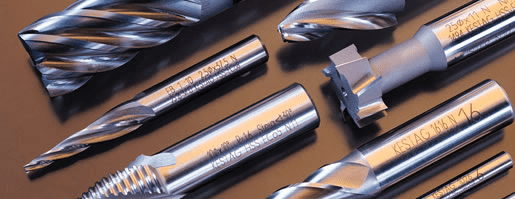
Tool Steels are particularly well-suited to the demanding needs of tools. In particular, they have great hardness, resistance to abrasion and deformability, and resistance to elevated temperatures.
They're often denoted by the method of hardening:
- W for water-hardening (won't resist high temperatures, can be brittle relative to other tool steels)
- O for oil-hardening (good abrasion resistance and toughness)
- A for air-hardening (versatile, low distortion during heat treatment, good machinability)
For example, "O" tool steels are quenched in oil after reaching their hardening temperature.
Common Uses:
- W grades cutting, embossing, and reaming tools and knives.
- O Grade: Arbors, bushings, chasers, collets, drill bushings, and gages.
- A Grade: Arbors, cams, die bending, coining, gages, woodworking cutters, and more.
Pros & Cons: See pros and cons for the different grades on the left.
Aluminum (Non-Ferrous Metals)

Aluminum is the third most common element in the Earth's crust after oxygen and silicon. This metal is remarkable for its low density and ability to resist corrosion. It is important in the aerospace, transportation, electrical, and building industries. It is also used to make a variety of household items. Aluminum is almost always alloyed to improve it's mechanical properties. About 25% of aluminum is cast and the rest is wrought or alloy aluminum.
Aluminum List
Metal
Alloys
Properties
Pros & Cons
Aluminum - Cast
MIC6, 319, 383, 356

Cast aluminum allows are mostly the 300-series, such as 319 for intake manifolds, cylinder heads, and transmission housings, 383 for engine blocks, 356 for cylinder heads, and A356 for wheels and suspension arms. A number of heat-treated conditions are available for cast aluminum. Heat-treatment isn't necessary for parts that are made via high pressure die casting.
Die cast aluminum is very strong and costs less than wrought aluminum.
Pros:
- In general, lighter and stiffer designs can be achieved with aluminum than steel.
- Aluminum's ability to conduct heat and electricity well are often useful.
- Aluminum has outstanding corrosion resistance.
- Aluminum is fully recyclable.
Cons:
- Most aluminums have 1/3 the elastic modules of steels which means they do not resist deformation as well. This is offset by using thicker walls, and there is still a weight savings versus steel.
- Aluminum doesn't handle fatigue as well as most steels, especially in applications with many fatigue cycles.
- Heat can create internal stress and strains. Also, aluminum expands and contracts more than steels as the temperature changes.
Metal
Alloys
Properties
Pros & Cons
Aluminum - Wrought (6061)
6061, 7050, 7075

Machined aluminum quadcopter mold
Aluminum alloys typically have an elastic modulus of about 70 GPa, which is about 1/3 of steel. For a given load, they will experience greater deformation. There are also aluminum alloys with somewhat higher tensile strengths than common steels. In general, stiffer and lighter designs can be achieved with aluminum. For example, aluminum bicycle frames use larger diameter tubing than steel frames to achieve greater strength with lighter weight.
An important limitation of aluminum alloys is their lower fatigue strength compared to steel.
Typical alloys:
- 1000 series are almost pure aluminum.
- 2000 are alloyed with copper and can be precipitation hardened to strengths comparable to steel. They're susceptible to stress corrosion cracking, so have been increasingly replaced by 7000 series in new designs.
- 3000 series are alloyed with manganese
- 4000 series are alloyed with silicon.
- 5000 series are alloyed with magnesium. They offer superb corrosion resistance, so are ideal for Marine applications.
- 6000 series are alloyed with magneisum and silicon. They are easily machinable and weldable. 6061 is probably the most commonly used general-purpose aluminum alloy.
- 7000 series are alloyed with zinc and can be precipitation hardened to the highest strengths of any aluminum alloy.
- 8000 series are alloyed with elements not covered by any other series.
Uses: Used extensively in aerospace and other applications where the high strength to weight ratio is important.
Pros:
- In general, lighter and stiffer designs can be achieved with aluminum than steel.
- Aluminum's ability to conduct heat and electricity well are often useful.
- Aluminum has outstanding corrosion resistance.
- Aluminum is fully recyclable.
Cons:
- Most aluminums have 1/3 the elastic modules of steels which means they do not resist deformation as well. This is offset by using thicker walls, so there is still a weight savings versus steel. The exceptions are 2000 and 7000 series aluminums, which are as strong as some steels.
- Aluminum doesn't handle fatigue as well as most steels, especially in applications with many fatigue cycles.
- Heat can create internal stress and strains. Also, aluminum expands and contracts more than steels as the temperature changes.
Brass and Other Copper Alloys (Non-Ferrous Metals)

Metals alloys that have copper as their primary component include Bronze (tin added to copper) and Brass (zinc added). Copper is also often alloyed with precious metals such as Gold and Silver.
Copper alloys typically have good thermal and electrical conductivity, strength, ductility, and excellent corrosion resistance. Beryllium Copper is the hardest and strongest copper alloy. It's mechanical properties are similar to many high strength steels, but it has better corrosion resistance.
Brass and Other Copper Alloys List
Brass
Metal
Alloys
Properties
Pros & Cons
Brass
Common Brass, Naval Brass

Brass astrolabe
Copper alloys whose primary alloying element is zinc are called "Brass".
Brass is used for decoration due to its gold-like appearance, for low friction such as locks, gears, bearings, doorknobs, and ammunition, for plumbing and electrical, and for musical instruments where its high workability makes achieving complex horn shapes easier. It is also useful in situation where sparks are to be avoiding, for example around gasoline.
Pros:
- Higher malleability than bronze.
- Conducts heat and electricity well.
- Attractive for decorative use.
- Machines easily
- Easily recycled
Cons:
- Low melting point, which can also be an advantage.
- Can be susceptible to stress corrosion cracking, particularly when exposed to ammonia.
Metal
Alloys
Properties
Pros & Cons
Bronze - Copper Alloy With Tin
Bronze has many alloys such as Phosphor Bronze and 90-10 Bronze.

By Pellegrini(User:Tetraktys) - taken by Ricardo André Frantz, CC BY-SA 3.0, https://commons.wikimedia.org/w/index.php?curid=2442423
Copper alloys whose primary alloying element is tin are called "Bronze".
Bronze preceeded Iron as civilization's hardest metal in widespread use. The Bronze age ran from mid-4th Millenia BC to early 2nd millenium BC after which the Iron Age took over (about 1300 BC).
Uses: Sculpture, springs, bearings, bushings, and applications where it is important to avoid sparks. Bronze is also a preferred metal for making the bells of musical instruments.
Pros:
- Harder than brass.
- Conducts heat and electricity better than steel.
- Resists corrosion and fatigue better than steel.
Cons:
- Higher melting point than brass.
Metal
Alloys
Properties
Pros & Cons
Copper Alloy - Wrought
C110, C11000
Copper alloys other than Brass and Bronze are also important.
Their chief advantages are electrical and heat conductivity together with excellent resistance to corrosion.
Uses: Electrical, coins, radiators, corrosion resistant fittings of various kinds.
Pros:
- Conducts heat and electricity well.
- Attractive for decorative use.
- Machines easily
- Easily recycled
Cons:
- Low melting point, which can also be an advantage.
High Temp Nickel Alloys (Non-Ferrous Metals)

Turbine blade with thermal barrier coating...
High Temperature Nickel Alloys are often called "Superalloys". They have several key characteristics: excellent mechanical strength, resistance to thermal creep deformation, good surface stability, and resistance to corrosion or oxidation.
Brass and Other Copper Alloys List
Metal
Alloys
Properties
Pros & Cons
High Temp Nickel Alloys (Superalloys)
Hastelloy, Inconel, Waspaloy
Development of the Superalloys has been driven by the needs of increasingly high performance turbine engines since the 1940's. Survival in this difficult environment requires some pretty special materials. One of the first alloys developed was Nimonic, which was used in the British Whittle engines.
In the 1950's improved processing methods such as vacuum induction melting greatly increased the temperature capabilities of these materials. Other major breakthroughs included the development of directional solidification (DS) and single crystal (SC) production methods. The SC research was first used in the J58 engines of the SR-71 aircraft.
In the 70's, thermal barrier coatings were introduced to increase performance further.
Uses: High-Temp Nickel Alloys are primarily used in turbine engines for aerospace and marine applications.
Pros:
- These alloys are the only ones available for the demanding conditions found in the hot sections of turbine engines used for aerospace and marine applications.
- They tolerate extreme temperatures and highly corrosive environments.
Cons:
- These alloys are very difficult to machine and work with, though some are much better than others.
Titanium and its Alloys (Non-Ferrous Metals)

Titanium crystal bar by Alchemist-hp (pse-mendelejew.de) - Own work, CC BY-SA 3.0, https://commons.wikimedia.org/w/index.php?curid=7329436
Titanium can be alloyed with iron, aluminum, vanadium, and molybdenum, among other elements, to produce strong, lightweight alloys for aerospace (jet engines, missiles, and spacecraft), military, industrial processes (chemicals and petrochemicals, desalination plants, pulp, and paper), automotive, agriculture (farming), medical prostheses, orthopedic implants, dental and endodontic instruments and files, dental implants, sporting goods, jewelry, mobile phones, and other applications.
It's two most useful properties are corrosion resistance and high strength-to-weight ratio, the highest of any metallic element. Even unalloyed, it is as strong as many steels.
If you intend to work with titanium there are a number of obstacles you must overcome. Be sure to check out our article on titanium machining for tooling, tips and techniques.
Titanium and its Alloys List
Metal
Alloys
Properties
Pros & Cons
Titanium and its Alloys
Alpha alloys (Ti-5Al-2Sn-ELI), Near-alpha alloys (Ti-6Al-2Sn-4Zr-2Mo), Beta alloys (Ti-6Al-4V), Near beta alloys.

Titanium is twice as strong as aluminum but only 60% denser. It is non-magnetic and a poor conductor of heat and electricity. It is extremely corrosion resistant.
Uses: Any application that values light weight and strength, but especially aerospace and transportation related.
Pros:
- Twice as strong as aluminum but weighs only 60% more.
- Excellent corrosion resistance, almost as good as platinum.
- Titanium is biocompatible, which means it is non-toxic and not rejected by the body.
Cons:
- Titanium is difficult to machine and work with.
- It burns in air at temperatures lower than its melting point (like magnesium). It will even burn in pure nitrogen gas.
- Titanium is quite expensive.
List of Precious Metals
Gold
Other Non-Ferrous Metals
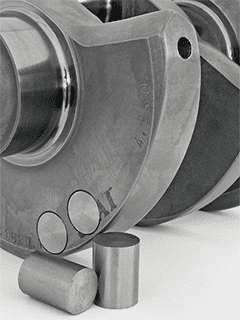
List of Other Non-Ferrous Metals
Metal
Alloys
Properties
Pros & Cons
Cobalt Chrome
ASTM F75 or F799
“What is Cobalt Chrome?” you might ask. Why it’s just what the Dr ordered, almost literally. CoCr is the common abbreviation. CoCr is extremely resistant to temperature, corrosion, and wear. It is commonly used in gas turbines, dental implants, and orthopedic implants.
Here is a typical dental application:
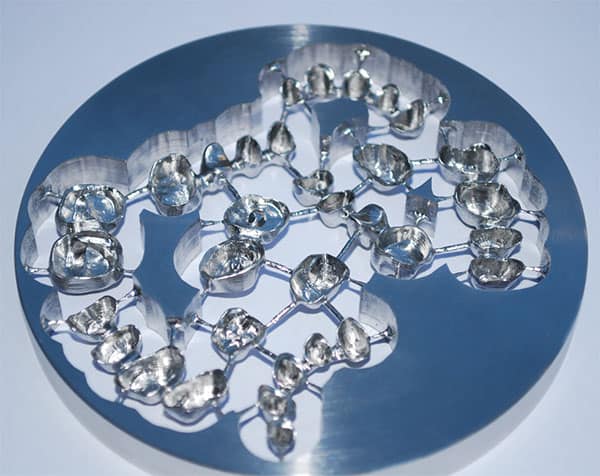
Dental bridges and crowns machined from Cobalt Chrome…
A material with those kinds of properties is very useful, but is also expensive to manufacture and hard to machine as you could imagine. Because of this, proper feeds and speeds are very important and G-Wizard is one of the few feeds and speeds calculators that can handle Cobalt Chrome calculations.
Pros:
- Extremely resistant to temperature, corrosion, and wear
Cons:
- Tough to machine.
- Expensive. Special applications only.
Metal
Alloys
Properties
Pros & Cons
Tungsten
EA17, EA17M
Most tungsten alloys are at least 90% Tungsten.
Tungsten is one of those very special materials that can be a lot of trouble, but when you need its properties nothing else will suffice.
It has the highest melting point of any element, so is unusually resistant to heat. That's one reason Tungsten Carbide is used for making machining cutters.
It's also extremely dense-19.25x water, which is comparable to uranium and gold. Relatively small pieces are quite heavy, which makes Tungsten valuable in balancing appliations.
The combination of high density and hardness make it ideal for military applications that involve projectiles that must penetrate armor plate.
Tungsten in its pure form is hard and extremely brittle. Therefor it's hard to machine. We have published a complete guide to machining tungsten, so be sure to refer to it before you try to work with this material.
Uses: About half of all tungsten production is used to manufacture cutters of various kinds. Most of the rest involves using tungsten to make various alloys stronger. Other uses include armaments, jewelry, light bulb and vacuum tube filaments, and many other niche applications.

Tungsten slugs used to balance a crankshaft.
Pros:
- High density and high melting point make it ideal for certain special applications.
Cons:
- China, Vietnam, and Russia are responsible for most of the world's production which can make it difficult due to political issues.
- Extremely brittle, subject to cracking.
- This combination of properties makes Tungsten hard to machine.
Types of Metals FAQ
What’s The Difference Between Ferrous and Non-Ferrous Types of Metals?
The simple answer is that Ferrous Metals contain Iron while non-ferrous metals do not. Steel and its many alloys are the most common types of ferrous metals being machined today.
What are the 4 types of Steel?
There are 4 types of steel:
- Carbon Steel: Steel that has low, medium, or high concentrations of carbon.
- Alloy Steel: Steel that has had substances added to improve its mechanical properties.
- Stainless Steel: Steel that is specially formulated to resist corrosion or high temperatures.
- Tool Steel: Steel that is specially formulated with the properties needed for tool making, such as high hardness.
How much carbon is in carbon steel?
Low carbon steel (mild steel) contains 0.04% to 0.3% carbon. Medium carbon steel has 0.31% to 0.6% carbon, making it stronger than low carbon, but also more difficult to form, weld and cut. High carbon steel has between 0.61% and 1.5% carbon. It is very difficult to cut, bend, or weld.
What is the strongest grade of steel?
Type 440 steel, which is a higher grade of cutlery steel. It can be hardened to Rockwell 58 hardness, making it one of the hardest stainless steels.
{"@context": "https://schema.org","@type": "FAQPage","mainEntity": [ {"@type": "Question","name": "What’s The Difference Between Ferrous and Non-Ferrous Types of Metals?","acceptedAnswer": {"@type": "Answer","text": "The simple answer is that Ferrous Metals contain Iron while non-ferrous metals do not. Steel and its many alloys are the most common types of ferrous metals being machined today." }}, {"@type": "Question","name": "What are the 4 types of Steel?","acceptedAnswer": {"@type": "Answer","text": "There are 4 types of steel: Carbon Steel: Steel that has low, medium, or high concentrations of carbon. Alloy Steel: Steel that has had substances added to improve its mechanical properties. Stainless Steel: Steel that is specially formulated to resist corrosion or high temperatures. Tool Steel: Steel that is specially formulated with the properties needed for tool making, such as high hardness." }}, {"@type": "Question","name": "How much carbon is in carbon steel?","acceptedAnswer": {"@type": "Answer","text": "Low carbon steel (mild steel) contains 0.04% to 0.3% carbon. Medium carbon steel has 0.31% to 0.6% carbon, making it stronger than low carbon, but also more difficult to form, weld and cut. High carbon steel has between 0.61% and 1.5% carbon. It is very difficult to cut, bend, or weld." }}, {"@type": "Question","name": "What is the strongest grade of steel?","acceptedAnswer": {"@type": "Answer","text": "Type 440 steel, which is a higher grade of cutlery steel. It can be hardened to Rockwell 58 hardness, making it one of the hardest stainless steels." }}]}
